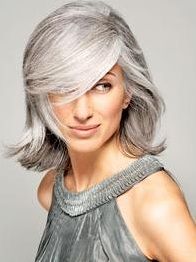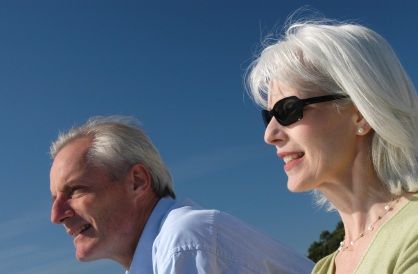 Gray hair. To some, it's the start of the end. Other people take it as a public token of knowledge. Several believe gray hair is triggered by stress and worry, however there is no proof to support this principle. No matter if dyed, washed or granted to grow naturally in its soft, wiry way, the appearance of gray hair can be a trademark occasion. Health, heredity and ecological factors all impact when your hair starts turning gray. But the main trigger is getting older.
Gray hair. To some, it's the start of the end. Other people take it as a public token of knowledge. Several believe gray hair is triggered by stress and worry, however there is no proof to support this principle. No matter if dyed, washed or granted to grow naturally in its soft, wiry way, the appearance of gray hair can be a trademark occasion. Health, heredity and ecological factors all impact when your hair starts turning gray. But the main trigger is getting older.The Origin Of Gray Hair
It all starts when your body halts generating melanin. Each string of your hair evolves out of a follicle that has cells loaded with melanin. These melanin-filled cells are known as melanocytes. Melanocytes move melanin to neighboring cells called keratinocytes. These generate keratin -- hair's primary element. When keratinocytes go through their slated demise, they keep melanin. The pigment apparent in hair and in the skin can be found in these dead keratinocyte bodies.Eventually, the volume of melanin in the keratinocytes lowers. Gray hair is basically hair with weak levels of melanin. White hair has no melanin at all. The weak existence of melanin also seems to be to play a role to the absence of moisture in gray or white hair. So as your hair gets lighter in color, its feel becomes dryer and rougher. That’s why gray hair is likely to be extra wavy or wiry.
The Approach Of Turning Gray.
At the starting of the graying approach, follicles generate colorless strands in an arbitrary routine. For unidentified factors, the first gray or white strands normally show up on your temples and the top of your head.Your hair does not basically "turn" gray, it develops in this way. Every day, hairs drop out and new ones substitute them. At any presented time, about 85% to 90% of your hairs are positively developing, while the rest are in a resting condition.
Commonly, 1 strand develops for 2 to 4 years. It then naturally goes into a resting condition for about 2 to 4 months, following which it drops out and is replaced by a new hair. Most individuals drop about 50 to 100 strands of head hair a day.
Darker hairs are mature and fall out faster than the newer gray hairs. So, when it appears to be like you "went gray overnight," in fact the gray strands just became more recognizable in the typical course of shedding. This is particularly impressive for individuals with telogen effluvium, a short-term problem in which a major stress, such as serious illness, surgery or unexpected weight loss, speeds up dropping to 300 hairs a day.
When Does Gray Hair Happens?
There is presently no clinical way to convey to when a specific cell or set of cells will quit generating melanin. In the early phases of graying, the melanocytes are still existing but non-active. Later on, they seem to cut down in number.This natural procedure of graying can start as early as your teens. In most individuals, on the other hand, graying first becomes recognizable in their late 30s.
Some scientists have proven that gender has a role in graying. The typical male begins to gray around age 30, while women generally began to see lighter strands around age 35.
Genetics are also an adding element. In some households, many members produce white hair in their 20s. But this scientific fact of life differs significantly from person to person, which lead skin experts and geneticists to determine that age is not the most precise signal of when gray hair will show up.
Accept Your New Look.
The first sign of Gray specks can be used as proof that you are ageing normally. Many products guarantee to gain your hair to its natural color. Individuals with gray hair have two options: leave it gray or dye it. Either way,
you’ll have a lot of company.
Share this article...

















